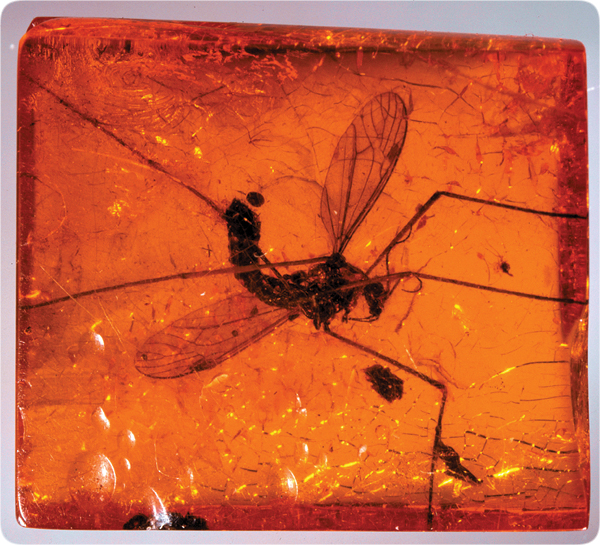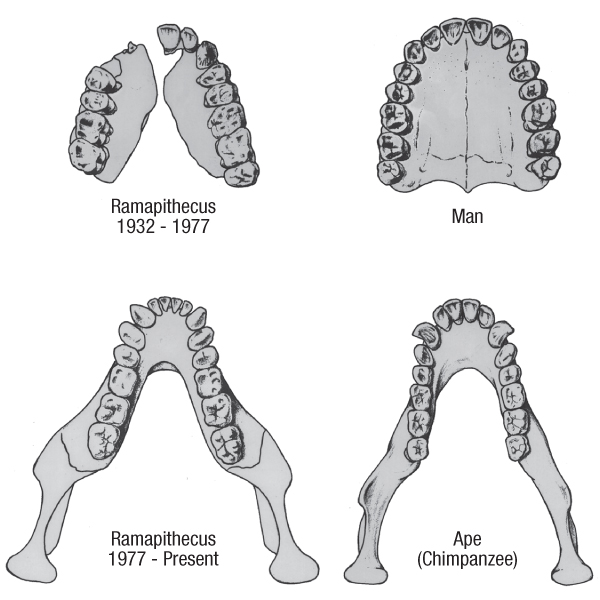Missing Trunk 3
Evolution predicts that minor variations should slowly accumulate, eventually becoming major categories of organisms. Instead, the opposite is found. Almost all of today’s plant and animal phyla—including flowering plants (c), vascular plants (d), and vertebrates (e)—appear at the base of the fossil record.
c. “... it is well known that the fossil record tells us nothing about the evolution of flowering plants.” Corner, p. 100.
A. K. Ghosh and A. Bose, “Occurrence of Microflora in the Salt Pseudomorph Beds, Salt Range, Punjab,” Nature, Vol. 160, 6 December 1947, pp. 796–797.
A. K. Ghosh, J. Sen, and A. Bose, “Evidence Bearing on the Age of the Saline Series in the Salt Range of the Punjab,” Geological Magazine, Vol. 88, March–April 1951, pp. 129–133.
J. Coates et al., “Age of the Saline Series in the Punjab Salt Range,” Nature, Vol. 155, 3 March 1945, pp. 266–267.
Clifford Burdick, in his doctoral research at the University of Arizona in 1964, made discoveries similar to those cited in the four preceding references. [See Clifford Burdick, “Microflora of the Grand Canyon,” Creation Research Society Quarterly, Vol. 3, May 1966, pp. 38–50.] Burdick was denied a doctor’s degree at the University of Arizona because of these discoveries. [See Jerry Bergman, “Clifford Burdick: Unjustly Expelled Twice,” Parts I and II, Creation Matters, September/October and July/August 2010.
d. S. Leclercq, “Evidence of Vascular Plants in the Cambrian,” Evolution, Vol. 10, No. 2, June 1956, pp. 109–114.
e. John E. Repetski, “A Fish from the Upper Cambrian of North America,” Science, Vol. 200, 5 May 1978, pp. 529–531.
“Vertebrates and their progenitors, according to the new studies, evolved in the Cambrian, earlier than paleontologists have traditionally assumed.” Richard Monastersky, “Vertebrate Origins: The Fossils Speak Up,” Science News, Vol. 149, 3 February 1996, p. 75.
“Also, the animal explosion caught people’s attention when the Chinese confirmed they found a genus now called Yunnanzoon that was present in the very beginning. This genus is considered a chordate, and the phylum Chordata includes fish, mammals and man. An evolutionist would say the ancestor of humans was present then. Looked at more objectively, you could say the most complex animal group, the chordates, were represented at the beginning, and they did not go through a slow gradual evolution to become a chordate.” Paul Chien (Chairman, Biology Department, University of San Francisco), “Explosion of Life,” www.origins.org/articles/chien_explosionoflife.html, p. 3. Interviewed 30 June 1997.
“At 530 million years, the 3-centimeter-long Haikouichthys appears to be the world’s oldest fish, while another new specimen, Myllokunmingia, has simpler gills and is more primitive. To Conway Morris and others, the presence of these jawless fish in the Early Cambrian suggests that the origin of chordates lies even farther back in time.” Erik Stokstad, “Exquisite Chinese Fossils Add New Pages to Book of Life,” Science, Vol. 291, 12 January 2001, p. 233.
“The [500] specimens [of fish] may have been buried alive, possibly as a result of a storm-induced burial....The possession of eyes (and probably nasal sacs) is consistent with Haikouichthys being a craniate, indicating that vertebrate evolution was well advanced by the Early Cambrian.” D. G. Shu et al., “Head and Backbone of the Early Cambrian Vertebrate Haikouichthys,” Nature, Vol. 421, 30 January 2003, pp. 527, 529.
D. G. Shu et al., “Lower Cambrian Vertebrates from South China,” Nature, Vol. 402, 4 November 1999, pp. 42–46.
[From “In the Beginning” by Walt Brown]



